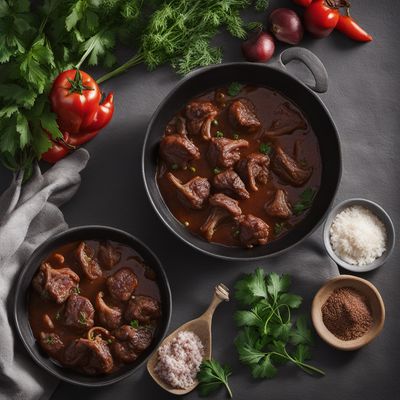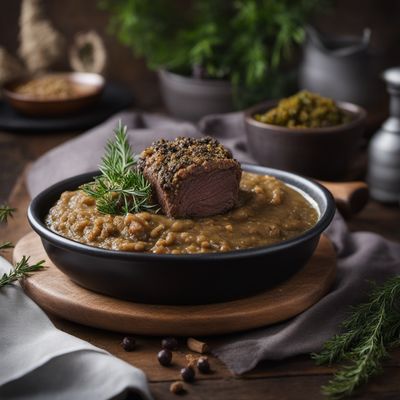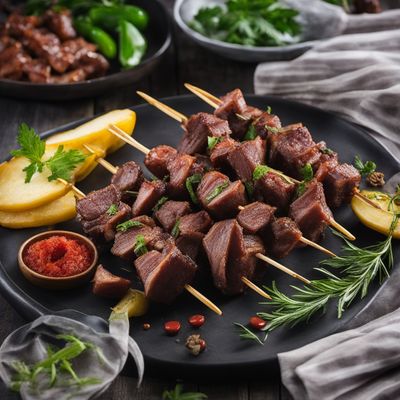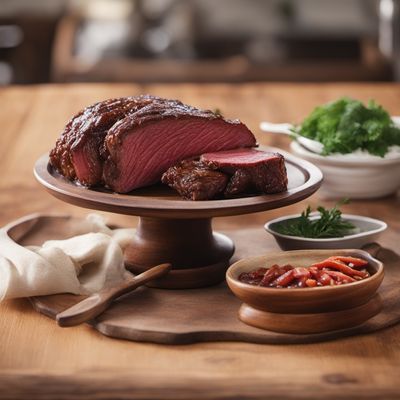
Ingredient
Sheep kidney
The Delicate Offal: Exploring Sheep Kidney
Sheep kidney is a small organ found in the abdominal cavity of sheep. It has a rich, gamey flavor that is often described as intense and robust. The texture of sheep kidney is tender yet slightly firm, with a smooth and velvety mouthfeel. When cooked properly, it can melt in your mouth, releasing its distinct flavors.
Origins and history
Sheep kidney has a long history of culinary use, particularly in European cuisines. It has been enjoyed for centuries, with recipes dating back to medieval times. In many cultures, offal ingredients like sheep kidney were highly valued as a way to utilize the whole animal and make the most of its nutritional benefits. Today, sheep kidney is still cherished in traditional dishes, such as steak and kidney pie or haggis, and is also appreciated by modern chefs for its unique taste and texture.
Nutritional information
Sheep kidney is a good source of protein, vitamins, and minerals, including iron, zinc, and vitamin B12. It is also relatively low in calories and fat. However, due to its high cholesterol content, it should be consumed in moderation as part of a balanced diet.
Allergens
Some individuals may be allergic to offal ingredients, including sheep kidney. It is recommended to start with a small amount and monitor for any adverse reactions. Additionally, those with kidney disease or other renal conditions should avoid consuming sheep kidney.
How to select
When selecting sheep kidney, look for fresh, firm organs with a deep red color. Avoid kidneys that have a strong odor or appear slimy or discolored. If purchasing from a butcher, ask for kidneys that have been properly cleaned and trimmed. It is important to handle and store sheep kidney properly to maintain its freshness and quality.
Storage recommendations
To store sheep kidney, place it in a sealed container or wrap it tightly in plastic wrap. Store it in the refrigerator's coldest section, such as the meat drawer, and use it within a day or two for optimal freshness. It is important to keep the kidney away from other foods to prevent cross-contamination.
How to produce
Sheep kidney is typically not produced by amateur cooks due to the specialized knowledge and techniques required. It is best to purchase sheep kidney from a reputable butcher or specialty store.
Preparation tips
Sheep kidney can be prepared in various ways, including grilling, pan-frying, or braising. It is often marinated beforehand to enhance its flavor and tenderness. Sheep kidney pairs well with bold flavors and ingredients, such as onions, garlic, herbs, and spices. It is commonly used in dishes like steak and kidney pie, stews, or kebabs.
Culinary uses
Sheep kidney is primarily used in traditional dishes, such as steak and kidney pie, haggis, or kidney stew. It can also be incorporated into modern recipes, adding a unique and rich flavor to dishes like pasta sauces, pâtés, or terrines. In some cuisines, sheep kidney is even used as a filling for sausages or as a topping for pizzas.
Availability
Sheep kidney is commonly available in regions where sheep farming is prevalent, such as the United Kingdom, Ireland, Australia, and New Zealand. It can also be found in specialty butcher shops or online retailers that cater to offal enthusiasts.
More ingredients from this category

Deer kidney
A Delicacy of the Wild: Deer Kidney

Rabbit kidney
Delicate Organ Delight

Wild boar kidney
The Culinary Delicacy

Equine kidney
The Delicate Organ

Goat kidney
The Grain that Sustains

Hare kidney
The Delicacy of the Wild

Pig kidney
The Delicate Organ

Bovine kidney
The Hidden Gem: Bovine Kidney
Recipes using Sheep kidney

Ceredigion-style Braised Kidneys
Savory Delight: Ceredigion-style Braised Kidneys

Traditional Scottish Haggis with a Modern Twist
Savory Scottish Delight: A Contemporary Haggis Recipe

Castilian-Manchego Style Roasted Lamb Offal Skewers
Savory Delight: Castilian-Manchego Style Roasted Lamb Offal Skewers

Sweet and Sour Spare Ribs
Tangy Glazed Spare Ribs: A Chinese Delight

Skirts and Kidneys with Whisky Sauce
Whisky-infused Skirts and Kidneys: A Scottish Delight

Punjabi-style Tangy Spare Ribs
Tantalizing Tandoori Spare Ribs with a Tangy Twist

Fusion Spiced Kidneys
Sizzling Fusion Kidneys: A Spicy Twist on a Classic Dish